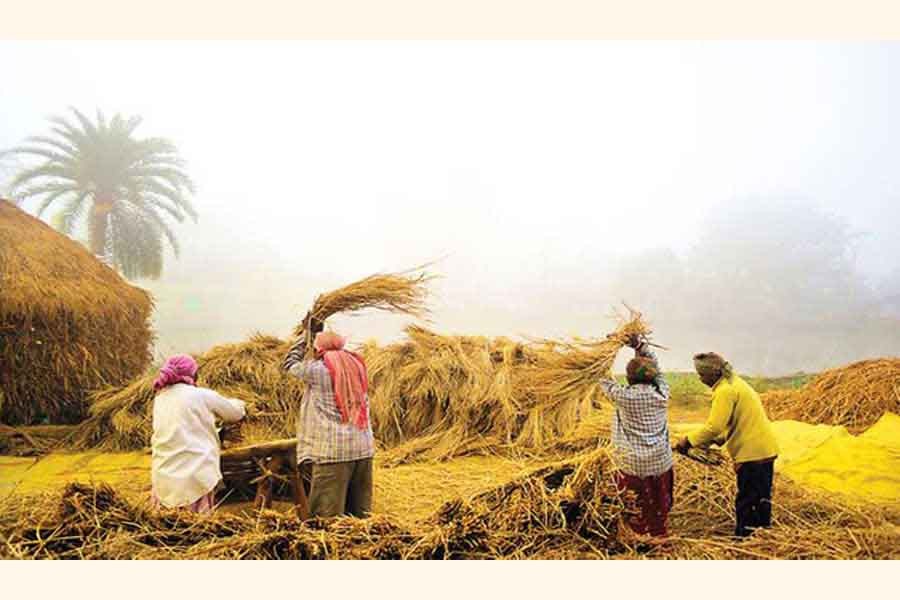
Published :
Updated :

On the Bangla calendar Jibananada's Hemanta has arrived more than a month ago. Blades of Aman paddy plants or grasses heralded the advent of this dusky season spreading, in its turn, a thin veil of gloom on human mind weeks ago but this city hardly noticed the change. It is impervious to Nature's nuances and delicate transformation because it is too artificial and too busy to notice such changes. But now that Nature is getting prepared for shedding leaves off the trees in a massive way, the city could not but take notice.
Blessed is this land to have six seasons. Who says the Hemanta and Autumn are nothing more than the fiction of mind? True, this year's Autumn was more rainy than full of sunny sky with patches of white clouds like balls of cotton lazily floating or hanging like a painting on a vast blue canvas overhead. Yet there were moments of the clear blue sky with the resplendent sun presenting its succulence and at night the moon flooding the vast expanses underneath with its mellow silvery glow.
But Hemanta was missing almost throughout the month of Kartik except the last week following the ravage wrought by the cyclonic storm Bulbul in the country's southern coastal areas. Even then there was something absent from the Hemanta which is a little chilly and at the same time produces a sense of nostalgia mixed with that of a loss but of what is unclear.
It is a kind of mystery that the tune of pining for something unknown in the air of Autumn deepens in the Hemanta. Notwithstanding the climate change that has been upsetting the cycles of seasons everywhere, the Autumn and the Hemanta still make their rounds and this year's Hemanta is particularly prominent right at this moment. No, the villages of the 60's and 70's of the past century have also disappeared but whatever little is left will bear testimony that Hemanta has announced its arrival quite loudly.
This was the main harvesting time in rural Bangla. Farmers observed Nabanno (celebration of harvesting of the main staple) with the new grains harvested. They brought sheaves of Aman paddy either on head or shoulders or on boats or bullock carts to stack on the open lawn and at night thrashed the paddy from stalks with the help of bullocks going round and round over the paddy stalks spread underfoot or even used to beat those with a whole bamboo stick. It was arduous but the thrashers had their rhythm to strike.
Those days will never return because mechanisation of farming has taken place to push out the manual labour. But what has really brought about a radical change in the rural picture is the presence of electricity. No longer are the hamlets without light at night. The sleepy, dark and quiet surrounding under the moon or in a moonless night presented a charming or eerie or ethereal look. That has been interrupted by the electric lights glowing ubiquitously from every nook and cranny. The pristine nature of rural Bangladesh has gone for ever.
Even then Hemanta leaves its special stamp on Nature. The fig tree with its large leaves under which Jibananda's finch sought rest is no longer common in villages. Man has become more commercial to plant trees that will earn him money within a few years. But yet the mustard field smiles in its regal yellow, the sheuli sends its enchanting scent for the last time before becoming bereft of its leaves in the winter. Villages still have wonders to unfold before eyes that look for the exceptional and the uniqueness in the ordinary. One still has no reason to be overtly disappointed if one keeps the two eyes -more importantly the mind's eye -open.


 For all latest news, follow The Financial Express Google News channel.
For all latest news, follow The Financial Express Google News channel.